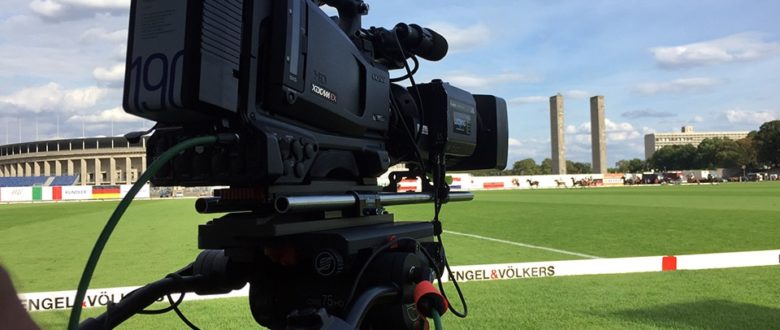
Live production and TV Live broadcasting of the Polo European Championship 2016 at the Olympiastadion in Berlin
The eleventh year of the FIP Polo European Championship ended on Sunday, 4 September 2016, at the Maifeld in Berlin with an exciting final between Ireland and France. In the final against the team from France, Ireland emerged as the winner and is thus for the first time European champion. Germany won 6: 5 against Austria and thus secured the third position of the XI FIP Polo European Championship.
When this short summary of a sports editorial was published, three production days with live recordings, live production and TV live broadcasting from the Berlin Olympiastadion came for us to the end.
From the German organizer of the Polo European Championship, we received a order for the multi-camera live production, live recording and live transmission of games finals for Pololine TV. Within the framework of the preparations, we took a look at the historical lawn of the Maifeld at the Berlin Olympiastadion a few weeks before the event. At the Olympic Games in 1936, competitions in polo were first held on the Maifeld and since that it has regularly been the venue for large-scale events.
As was planned we used four HD cameras positioned both centrally and on sides. A special camera tower was built for the main camera in order to have all the time a perfect overview over the entire playing field. In front of the camera tower there was another camera positioned, which was equipped with a 40x telephoto lens. Due to large dimensions of the polo field with 250x180m, glass fibre cables and multi-core cables were used for the transmission of image, sound and intercom.
All the cables and signals from the camera, sound and intercom came together in our live production switcher that we built rain-proof in a tandem suitcase trailer. There were three workstations for a video technician, a slomo operator and a live broadcast controller. The video operator was by Intercom in permanent touch with cameramen and created a live program signal. Responsible for live graphics and repetition of important scenes was the Slomo operator. The signals from all cameras were parallel recorded in our Slomo system. After a goal or another important scene, we could immediately show the last seconds as Slomo-Reply, mix it with the live transition into the program signal and then switch back to the live picture. With the ongoing transmission control and monitoring of the transfer traffic from our OB vehicle, we were finally ensured that our finished send signal was transmitted to Pololine TV without errors and in perfect HD quality.